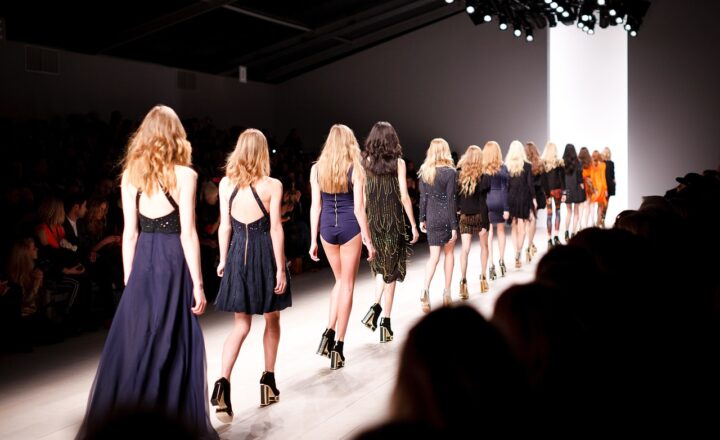The Most Bizarre Fashion Statements in History That Shocked Society and Changed the Way We Dress Forever
November 17, 2024

Fashion is more than just clothing; it’s a reflection of society, culture, and the time we live in. Throughout history, there have been fashion statements that have not only shocked society but also transformed the way we perceive and approach clothing. In this article, we will delve into some of the most bizarre fashion statements that have left a lasting impact on the world of style.
1. The Corset: Beauty or Torture?
The corset has been a significant garment in fashion history, especially during the 16th to the 19th centuries. It was a symbol of high status and femininity, pushing women to achieve the coveted hourglass figure. However, the corset’s tight lacing often led to health issues, including difficulty breathing, broken ribs, and even fainting spells.
Despite its controversial nature, the corset revolutionized women’s fashion. With the advent of the suffrage movement in the early 20th century, women began to reject corsets, paving the way for a more liberated approach to fashion.
2. The Beatles’ Moptop Haircut
The 1960s saw a dramatic transformation in men’s fashion, largely influenced by British rock band The Beatles. Their iconic moptop hairstyle challenged the conventional norms of masculinity at the time. Young men everywhere flocked to barbers for the signature cut that symbolized rebellion and a break from traditional gender norms.
Crucially, this shift in hairstyle was accompanied by an evolving fashion sense that encouraged self-expression and individuality among the youth. What began as a bizarre statement quickly evolved into an enduring trend that changed men’s grooming practices for decades to come.
3. The Mini Skirt: Feminism and Liberation
Introduced in the 1960s by designer Mary Quant, the mini skirt made waves across the globe. Rejected by traditionalists, its rise to popularity symbolized women’s liberation and empowerment. The short hemline stirred controversy and led to heated debates about modesty and women’s rights in society.
The mini skirt’s embrace in fashion demonstrated a significant shift in women’s roles, mirroring the feminist movement’s goals to break free from societal expectations. It remains a staple in women’s fashion today, epitomizing boldness and freedom.
4. Platform Shoes: Elevated Fashion and Function
Emerging in the 1970s, platform shoes provided a dramatic lift to any outfit. Popularized by disco culture, they became a symbol of glam, flamboyance, and self-assertion. Both women and men wore platforms to stand out on dance floors, defying conventional ideas of how footwear should look.
However, the extreme height of platforms often led to injury, and the practicality of these shoes was questioned. Yet, despite the physical toll, the impact on fashion was undeniable, marking a period of bold experimentation in footwear style.
5. The Shoulder Pad: Power Dressing in the 1980s
The 1980s were defined by power dressing, and shoulder pads were at the forefront of this bold statement. Worn by both men and women, these exaggerated accessories symbolized assertiveness and professionalism in a decade focused on success. Designers like Yves Saint Laurent and Claude Montana embraced the shoulder pad, making it an integral part of business attire.
Though often critiqued for their severe appearance, shoulder pads changed perceptions in the workplace, challenging norms regarding femininity and authority.
6. Grunge Style: The Anti-Fashion Movement
In the early 1990s, grunge emerged as a counter-cultural movement characterized by thrift-store clothing, flannel shirts, and combat boots. Bands like Nirvana embodied this rebellion against the polished aesthetics of mainstream fashion. Grunge’s emphasis on comfort and authenticity challenged societal norms while appealing to youth culture who felt alienated by traditional fashion narratives.
This movement not only diversified fashion but also allowed individuals to express their identities without conforming to heightened beauty standards. The remnants of the grunge aesthetic continue to influence contemporary fashion, promoting comfort alongside style.
7. The Unconventional: Gender-Bending Fashion
Fashion has become a playground for gender exploration, with designers like Jean-Paul Gaultier blurring lines traditionally associated with masculinity and femininity. The rise of androgynous models and non-binary fashion has sparked discussions on identity and acceptance, challenging the fashion industry to embrace inclusivity.
Outfits that play with gender norms—like skirts on men and tailored suits on women—continue to shock traditionalist views and encourage broader discussions about personal expression through clothing.
Conclusion
Fashion history is rich with bizarre yet significant statements that have shaped societal views on dress and identity. From the constrictive corset to the free-spirited vibe of grunge, these trends reflect an ongoing dialogue between clothing and culture. Embracing these historical influences allows us to understand today’s fashion landscape, as we continue to challenge, redefine, and reshape the norms surrounding what we wear.
Join us in exploring these bizarre fashion transitions to celebrate how they’ve contributed to the vibrant tapestry of style choices we see today.







